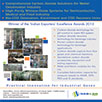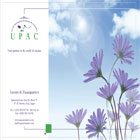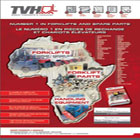

M a r k e t N e w s
Kenya and Uganda have agreed on the northern route for the 1,500km pipeline
Posted on : Thursday, 18th August 2016
Kenya and Uganda have agreed on the northern route for the 1,500km pipeline to transport oil from Hoima in western Uganda to the Indian Ocean on Kenya’s coastline, ending a year long dispute between the two countries’ leaders. The path will go through northern Kenya and Lokichar basin before reaching the coastal port in Lamu. This was President Uhuru Kenyatta (“Kenyatta”)’s preferred route. The alternative route which would have ended at Mombasa port would have covered a shorter distance and cost less, but it would have required the displacement of hundreds of people.
The northern path—to serve Kenya, Uganda, South Sudan, and potentially Ethiopia—is one of the region’s largest infrastructure projects and it is hoped will transform east Africa into a major oil exporter. The project, which is not expected to be completed until 2020, will have to overcome certain challenges including the falling oil prices, heating of the pipeline and security risks. It is also not yet clear who will bear the costs of the pipeline, which authorities say is still subject to financing and security guarantees. The project is estimated to cost around Ksh404.8 billion (US$4 billion).
The two leaders, President Yoweri Museveni (“Museveni”) of Uganda and Kenyatta, reached the final agreement on the route during Kenyatta’s first state visit to Uganda. The two Presidents used the opportunity to discuss other issues such as security, trade and investment. This week, Kenyatta has been in Addis Ababa, Ethiopia, to join other regional leaders in the Inter Governmental Authority on Development (“IGAD”) summit in talks over the South Sudan crisis. The set deadline, 17 August, to achieve a resolution has not been met and the prospects of a conclusive end to South Sudan’s civil war look remote.
In the first week of August, Moody’s gave Kenya a stable credit rating pegged mainly on the growth potential of the country. It acknowledged the challenges of insecurity, high government spending and the budget deficit. Moody’s tone differed from Fitch Rating’s more cautionary one which cited Kenya’s increased borrowing and downgraded the country’s ratings from stable to negative. This raised concerns on the country’s ability to raise further revenue or get lower interest debt in future. On 12 August, against expectations by banks and analysts, the Monetary Policy Committee (“MPC”) retained its lending rate at 11.50 percent citing the recent tightening which had not fully taken effect.
In the power sector, the Kenya Power and Lighting Company (“KPLC”) has signed an agreement to purchase power from two local private companies in its bid to add more generation capacity to its national grid. KPLC will purchase 70 megawatts (“MW”) from the Akiira geothermal plant and 6MW of hydroelectric power from Kleen Energy. In other developments, Maralal Energy Limited is set to build a wind power plant in Meru in northern Kenya. The project will generate 60MW and will cost KSh4.5 billion. Maralal is the latest firm to target the county, which is fast becoming an increasingly attractive destination for renewable energy firms.
In the agriculture sector, the major development has been the controversial sugar deal signed between Kenya and Uganda. The deal will remove sugar import barriers to allow Uganda to export its surplus sugar to Kenya. Meanwhile, the government is privatising sugar companies to try to help Kenya’s crippled sugar industry to recover. The import decision may have a backlash on struggling sugar companies such as Mumias sugar that have been facing high production costs. Mumias stock trading on the Nairobi Securities Exchange has already fallen dramatically since the news of the agreement was announced.
In summary, Kenya continues to have a positive economic outlook despite certain challenges of security, high spending and a large budget deficit. Moody’s confirmed this at the beginning of August when it gave Kenya a stable credit rating. Three key sectors have stood out in the news in recent weeks. The agreement between Kenyatta and his Ugandan counterpart on the northern route for the crude oil pipeline has thrown the spotlight on the oil and gas industry.
The northern route was the preferred one for the Government of Kenya and international oil companies, Tullow Oil and Africa Oil, active in the Lokichar Basin. Meanwhile, the Government of Kenya continues to invest heavily in renewable energy to increase power supply and reduce the cost of electricity. KPLC signed an agreement which will add 76MW to Kenya’s power supply by end of 2016. Finally, in the agriculture sector the controversial sugar deal which will allow surplus sugar from Uganda into Kenya’s market continues to raise protests, with critics arguing it will cripple the already suffering sugar industry.
Source : www.africamatters.com





























































